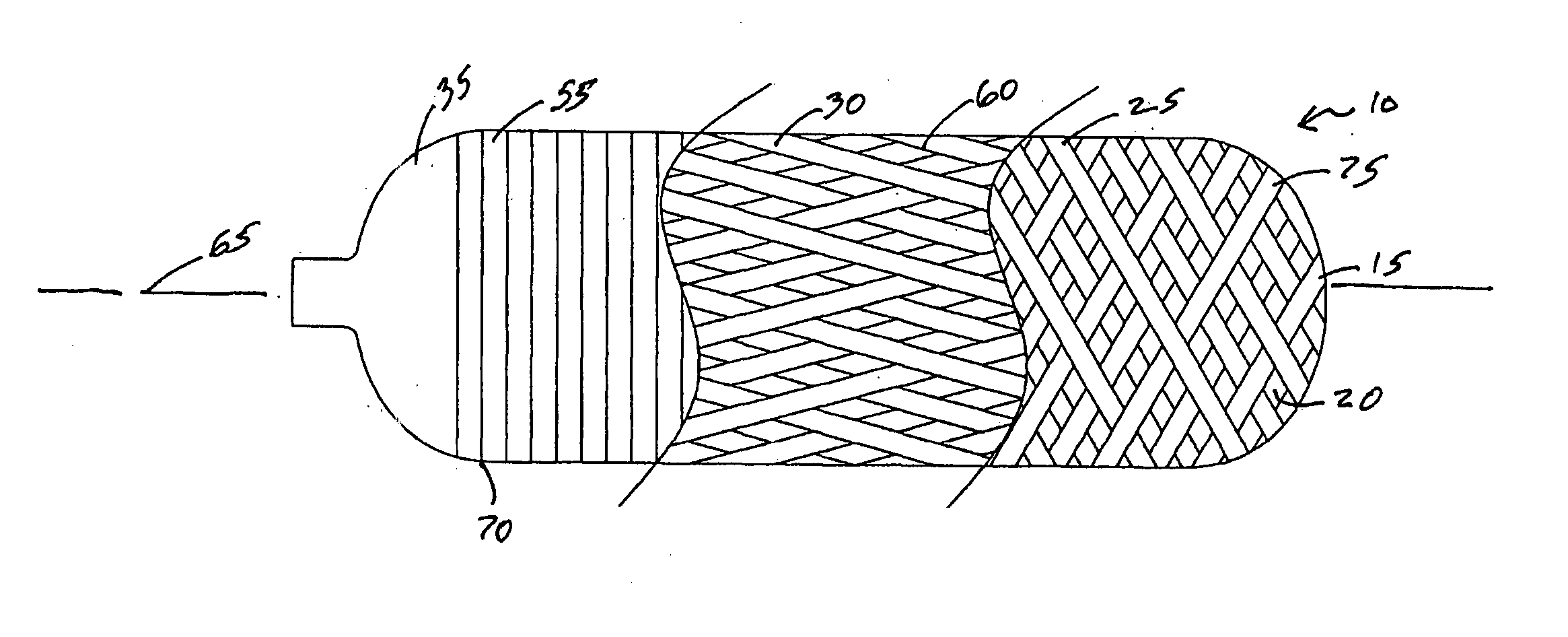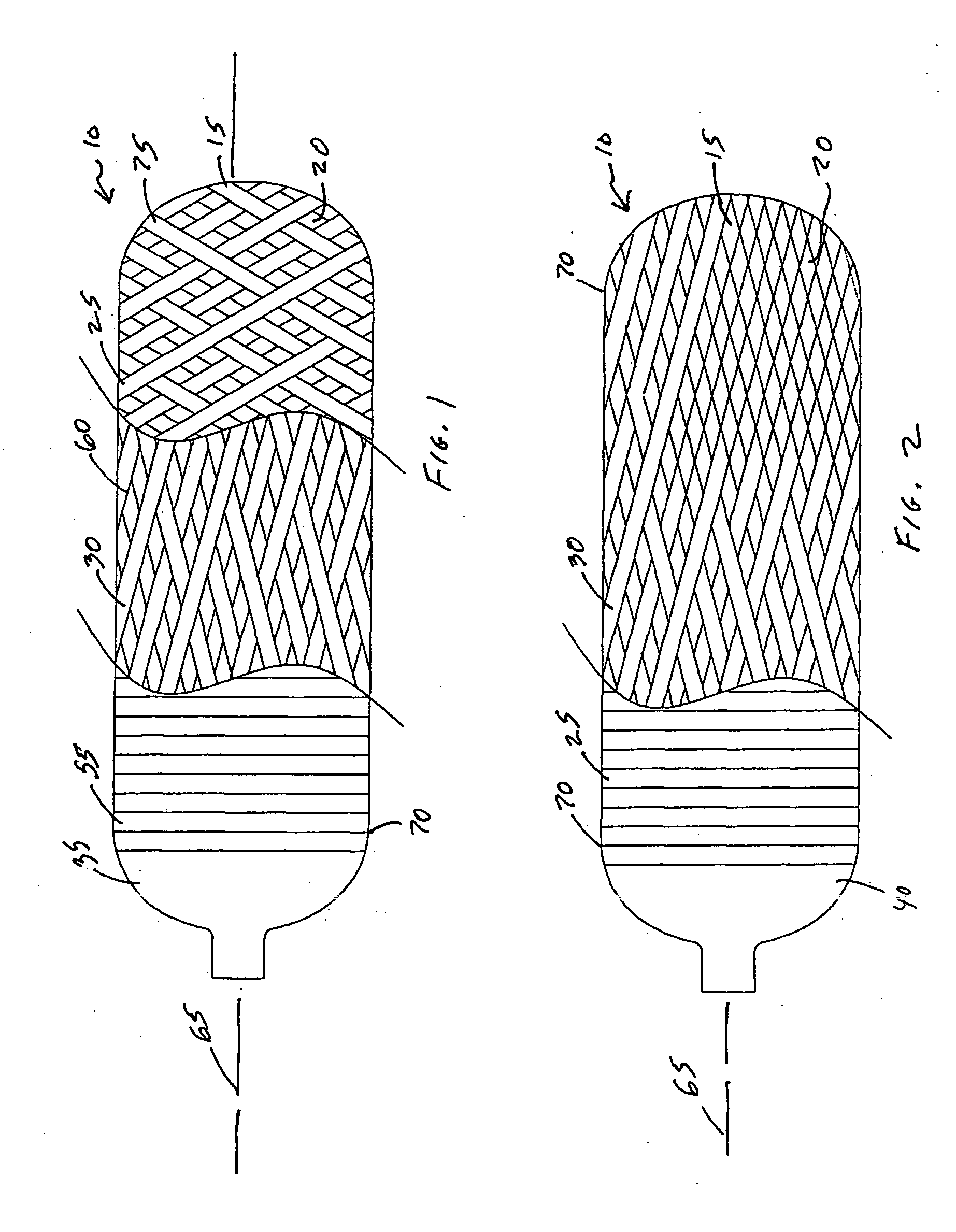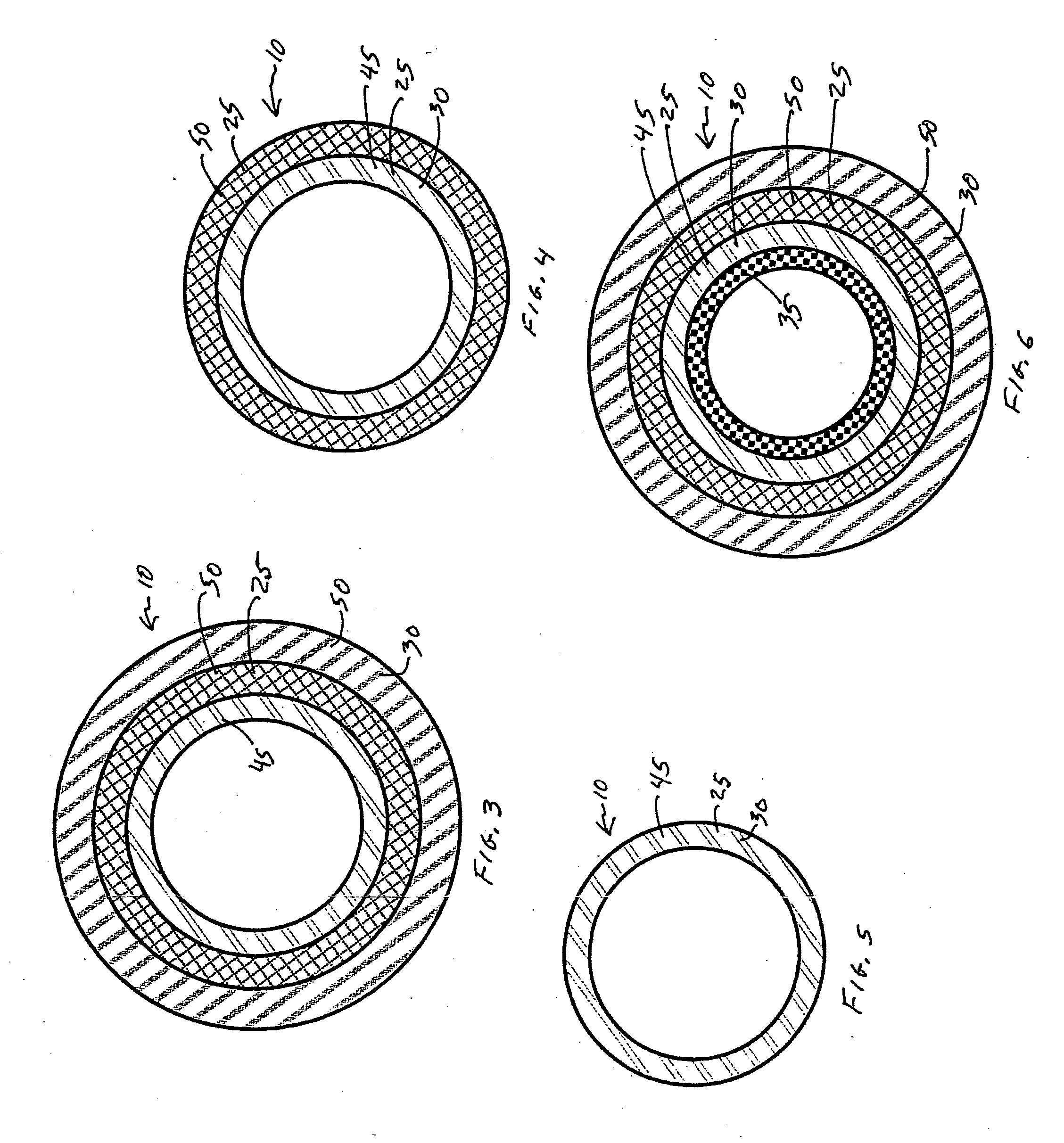Pressure vessel with improved impact resistance and method of making the same
a pressure vessel and impact resistance technology, applied in the field of pressure vessels, can solve the problems of low impact damage tolerance of high-performance materials, inability to detect impact damage, and high cost, and achieve the effect of high degree of dispersibility
- Summary
- Abstract
- Description
- Claims
- Application Information
AI Technical Summary
Benefits of technology
Problems solved by technology
Method used
Image
Examples
Embodiment Construction
[0055] (1) An improved pressure vessel 10, as illustrated in FIGS. 1-7, 9 and 10, providing the desired features includes a composite material having fibers 15 located in a resin matrix 20. The improvement includes at least first 25 and second 30 sets of fibers 15.
[0056] (2) In a variant of the invention, the first set of fibers 25 includes high strength fibers.
[0057] (3) In a further variant, the first set of fibers 25 includes high modulus materials.
[0058] (4) In still a further variant, the second set of fibers 30 includes fibers having high toughness characteristics.
[0059] (5) In another variant, the second set of fibers 30 includes high modulus materials.
[0060] (6) In still another variant, the second set of fibers 30 includes fibers having low stiffness characteristics.
[0061] (7) In yet another variant, the second set of fibers 30 includes fibers having low compressibility characteristics.
[0062] (8) In still another variant of the invention, the first set of fibers 25 i...
PUM
| Property | Measurement | Unit |
|---|---|---|
| angle | aaaaa | aaaaa |
| angle | aaaaa | aaaaa |
| weight | aaaaa | aaaaa |
Abstract
Description
Claims
Application Information
 Login to View More
Login to View More - R&D
- Intellectual Property
- Life Sciences
- Materials
- Tech Scout
- Unparalleled Data Quality
- Higher Quality Content
- 60% Fewer Hallucinations
Browse by: Latest US Patents, China's latest patents, Technical Efficacy Thesaurus, Application Domain, Technology Topic, Popular Technical Reports.
© 2025 PatSnap. All rights reserved.Legal|Privacy policy|Modern Slavery Act Transparency Statement|Sitemap|About US| Contact US: help@patsnap.com



